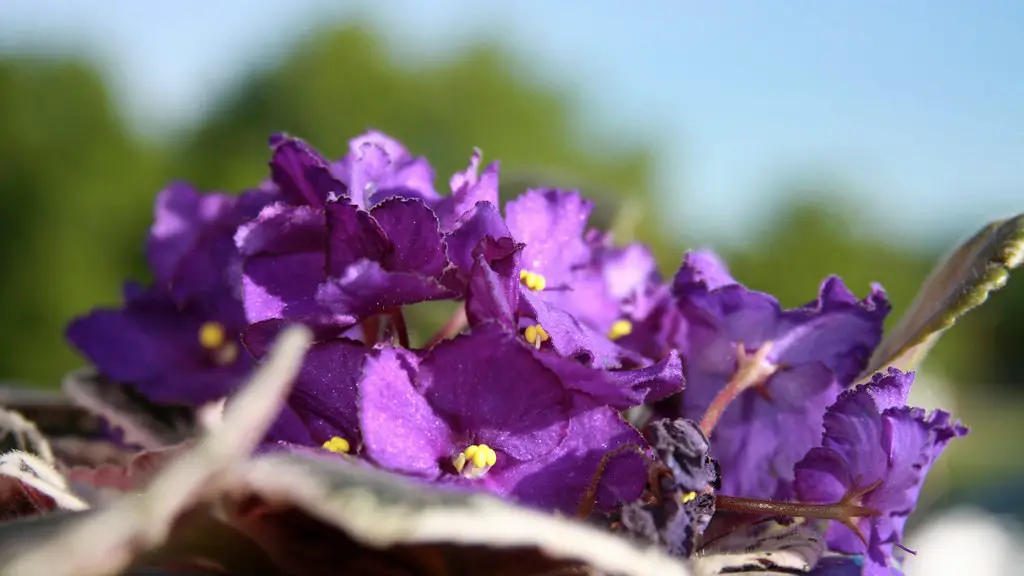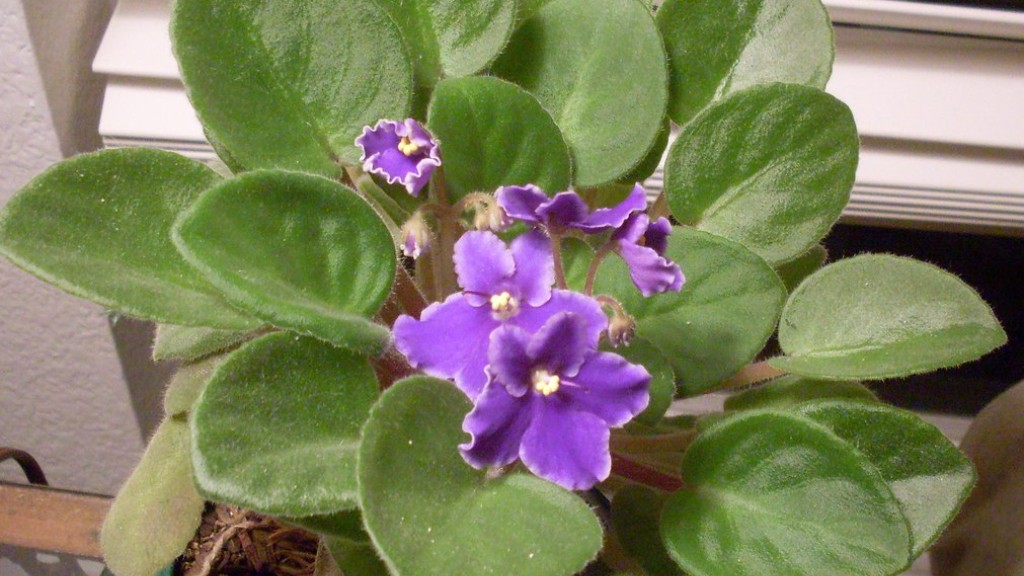The African Violet is a common houseplant that is known for its beauty and ease of care. Many people choose to water their African violets from the bottom, as this method is believed to be the best way to prevent overwatering and to encourage strong root growth.
You can water African violets from the bottom by placing the pot in a bowl or saucer of water. Allow the water to soak up into the pot for about 15 minutes, then drain the excess water.
Do you have to bottom water African violets?
There is no definitive answer to whether it is better to water African violets from the top or bottom. Both methods are fine, as long as you take care not to use cold water (lukewarm or warm water is preferred). If you water from the top, be careful not to get water on the leaves when the plant is in the sun; this is to avoid leaf spots.
It is important to keep an eye on your African violet houseplant and make sure that it is not being over-watered. Water your plant from the bottom up, and refill the bottom piece as your plant depletes the water.
What kind of water is best for African violets
If you’re going to be growing African violets, it’s important to make sure that the water you’re using is free of chlorine. One way to do this is to fill a jug with water and let it sit overnight to allow the chlorine to dissipate. You can also use bottled water, filtered water, or reverse osmosis water. Just be sure that the water you use doesn’t come from a water softener, as it may contain dissolved salts that could be harmful to your plants.
African violets are delicate flowers that need to be taken care of with a light hand. Over watering them is one of the quickest ways to kill them. To make sure your African violets are never over watered, set up a wicking system where they only get watered once a week and the plant is allowed to completely dry out between waterings.
Do African violets like to be misted?
It is important to water African violets correctly to avoid crown rot. Do not mist the foliage, as this can cause permanent leaf spotting. Water the plants at room temperature and be careful not to saturate the crown of the plant.
It is important to clean the leaves of your African Violet on a regular basis. This will help to keep the plant healthy and looking its best. The best way to clean the leaves is to fill a spray bottle with room temperature or tepid water and spray the leaves. Then use your fingers to rub the top and bottom of the leaves. You can also use the spray bottle method to clean the leaves with liquid soap.
Where is the best place to put an African violet?
African violets are delicate flowers that are typically grown indoors in North America. They thrive in bright, indirect light and require a location that is out of direct sunlight. A plant stand three feet away from a west- or south-facing window is an ideal location for an African violet.
If you think your African violet may be overwatered, take a look at the leaves. If they are droopy, soft, or mushy, that is a sure sign that the plant is getting too much water. In addition, the roots may be discolored or mushy, and the potting mix may be saturated and soggy. If you see any of these signs, it’s best to stop watering for a while and let the plant dry out a bit.
Can you water African violets with ice cubes
It is best to avoid using ice cubes to water African violets as the cold water can damage the plants. Room temperature water is the best option to use.
If you’re anything like me, you’re always looking for ways to make your African violet happy. One way to do that is to make sure the water you give it is tepid or at room temperature. It’s best to let it sit for 24-48 hours, but if you can’t, then at least let it stand for an hour. This will help your plant absorb the water more easily and reduce the risk of shock.
Can you water African violets with coffee?
Coffee grounds are slightly acidic and contain nitrogen, which helps plants grow healthy foliage. Occasionally sprinkling used coffee grounds on top of your African violet potting soil can be good for the plant.
Most African violets need 12-14 hours of light per day, provided in a south-facing window. LED grow lights are also a good option and help to mimic natural sunlight.
Humidity is also key for African violets. You can increase the humidity around your plants by using a pebble tray, humidifier, or grouping plants together.
African violets also need nutrients to bloom. Use a fertilizer made specifically for African violets or add bone meal or blood meal to your potting mix.
It’s important to keep your African violets in a comfortable temperature. They like rooms that are around 70 degrees Fahrenheit.
The right soil is also essential for African violets. Look for a potting mix that is well-draining and contains sphagnum moss.
Last but not least, African violets need to be protected from pests and disease. Inspect your plants regularly and remove any pests you see. Also, be sure to water from the bottom to avoid getting water on the leaves, which can lead to fungal diseases.
How do I know if my African Violet is getting enough light
If you are growing African violets indoors, it is important to give them plenty of indirect sunlight. The best way to do this is to place them near a south-facing window. During the winter months, when the days are shorter, you may need to supplement the natural light with artificial light. Be sure to use a grow light that emits full-spectrum light.
The best temperature for the plant is 70 degree F. Avoid drafts. Establish humidity for the plants by placing them on wet pebbles. African violets like humid rooms, so a sunny bathroom or kitchen window can work well.
Is it better to root African violets in water or soil?
If you’re looking to root African violets, the good news is that it’s easy to do so. One of the quickest and easiest ways is to use a leaf from an existing African violet plant. Simply place the leaf in a cup of water and wait for it to sprout roots. Once it has rooted, you can then transplant it into a pot of its own.
Plastic is the most fuss-free option when it comes to potting African violets. You don’t have to worry about the soil drying out and they’re also long lasting. Plus, plastic pots are available in a variety of sizes and colors to fit your needs.
Conclusion
No, you should not water African violets from the bottom. Watering African violets from the bottom can lead to wet leaves and increased risk of fungal diseases. Instead, water African violets from the top, using lukewarm water, until the soil is evenly moist. Allow the excess water to drain away and do not allow the plant to sit in water.
No, you should not water African violets from the bottom. Watering from the bottom can cause the leaves to rot, and it can also encourage fungal growth.




